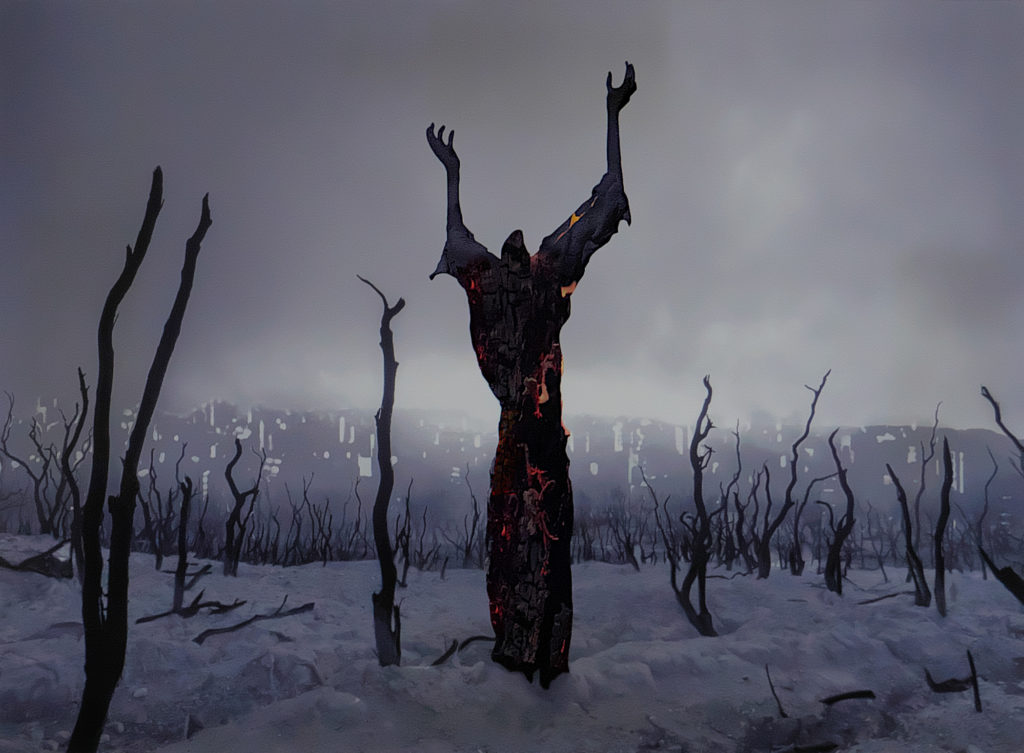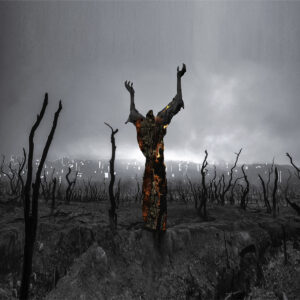A wildfire is an uncontrolled fire impacting a bush area. But as shown by the Australian tragedy, this definition could well be applied to urban centers. In October 2019, the flames licked the doors of the Getty museum, LA, 20 minutes driving from downtown. Urban forests canopies when not correctly maintained could increase fire risks with hot temperatures and dry weather due to climate change. In seismic areas, quakes can cause fires due to electrical short circuit or gas leaks.
So far, major dense urban centers have been spared, but we should not bury our heads: fires will be added to the list of urban hazards with its litany of tragic socio-urbanistic-environmental disasters. The issue of urban fire resilience is rarely specifically addressed, and most often limited to the wildland-urban interface (WUI). Thereof, the pending question remains: where are the means, if any, enabling a city to withstand fire risks others than first aid-rescue? And does it make sense to think in terms of mitigation/adaptation balance for such devastating hazard?
To these questions, understanding how aboriginal culture deals with fire management, analyzing WUI risk factors and showing that urban design can be “fire-assessed”, may introduce some “resilience thinking” and possibly more optimistic perspectives.
In March 2018, 20 wild fires ignited in the area of Bega Valley, New South Wales, Australia, turning the landscape into a blackened trees frame. In this deadly scenery, a clearing emerged. Six months before the fires, the Bega Local Aboriginal Land Council (1) initiated a cultural burning program on 3.5 hectares using methods taught by the ancients for thousands of years. Rather than living the soil burned by “hot” fires, leading to invasive natives, themselves fuel for future fires, traditional burning helped to grow more native grasses and a diversity of plants. But cultural burning is costly and labor intensive. Funding was limited. Eighteen months later, 85 fires burned the area destroying 150 homes with fatal casualties (2).
Though cultural burning solutions look to be unrealistic in view of the current Australian tragedy magnitude, the social acceptance of alternative fire strategies has been on the agenda of wildfire management for a while. But the diversity of environmental situations is challenging and regulations do not help. However, as underlined by DE Calkin & Al (3), resilience thinking extended to wildfires management, encompassing social and ecological systems, could provide an interesting lens to examine current challenges.
Amongst the different factors leading to reconsider the current wildfire management paradigm, the findings of HA Kramer & Al (4) shed a new light on the wildland-urban interface. WUI is defined as area where houses meet or intermingle with undeveloped wildland vegetation. Contrary to what most of us could think, though at high risk level and experiencing the vast majority of all losses, WUI can be settled areas with little wildland vegetation. Fires are triggered by “man-made” fuels, be it home themselves, wood piles, gas tanks or cars but not by the vegetation often included in the models that are used to predict these fires. Seen from this perspective, land-use planners, forest planners, and local emergency management officials could contribute towards safer building practices in the interface communities, by implementing participatory mapping to improve wildfire preparedness and mitigation.
From WUI to the dense urban center of Surabaya, Indonesia, P. Navitas (5) proposes an innovative approach, combining the Lynch principles of urban design (6) with the psychological dimension of safety as defined by Cai & Wang (7). Using a design matrix to describe the interactions between Lynch and Cai/Wang models, the author shows how environmental design can improve resilience by supporting mitigation efforts, while simultaneously increasing disaster preparedness. Paths, edges, nodes, districts and landmarks face the requirements of psychological, behavioral, defense and disaster safety aiming to propose an appraisal tool for a better resilience.
Do cities learn from getting burned? Possibly; do they opt not to rebuild the burnt dwelling? Rarely (8). The disaster magnitude of urban fire hazards is still questionable. The Getty museum says having a state-of-the-art fire protection but poor and vulnerable people don’t.
In the below work, a half burnt man-tree shouts above a scorched ground. Addressing a supplication to the background city, and in the same time rising back from his ashes, he recalls our collective duty to build a sustainable world for future generations.

- https://www.abc.net.au/news/2018-09-18/indigenous-burning-before-and-after-tathra-bushfire/10258140
- https://www.theguardian.com/australia-news/2019/nov/11/nsw-fires-premier-declares-state-of-emergency-amid-most-devastating-bushfires-ever-seen
- https://doi.org/10.1186/s40663-015-0033-8
- https://doi.org/10.1071/WF18108
- https://doi.org/10.1016/j.sbspro.2014.07.344
- The image of the city, the MIT Press
- https://link.springer.com/article/10.1007/s11709-009-0023-4
- http://www.csiss.org/events/other/agent-based/papers/goldstein.pdf

Thanks for making people aware of aboriginal knowledge. My brother lives north of Bura Valley in New South Wales Australia, & most of his neighbours have been evacuated because of fires.
The “greeny” party in his area of Kurrajnong do not let small rural property owners do controlled burns, even though aboriginals present evidence-based pleas.
I trust ancient local wisdom will come to be valued